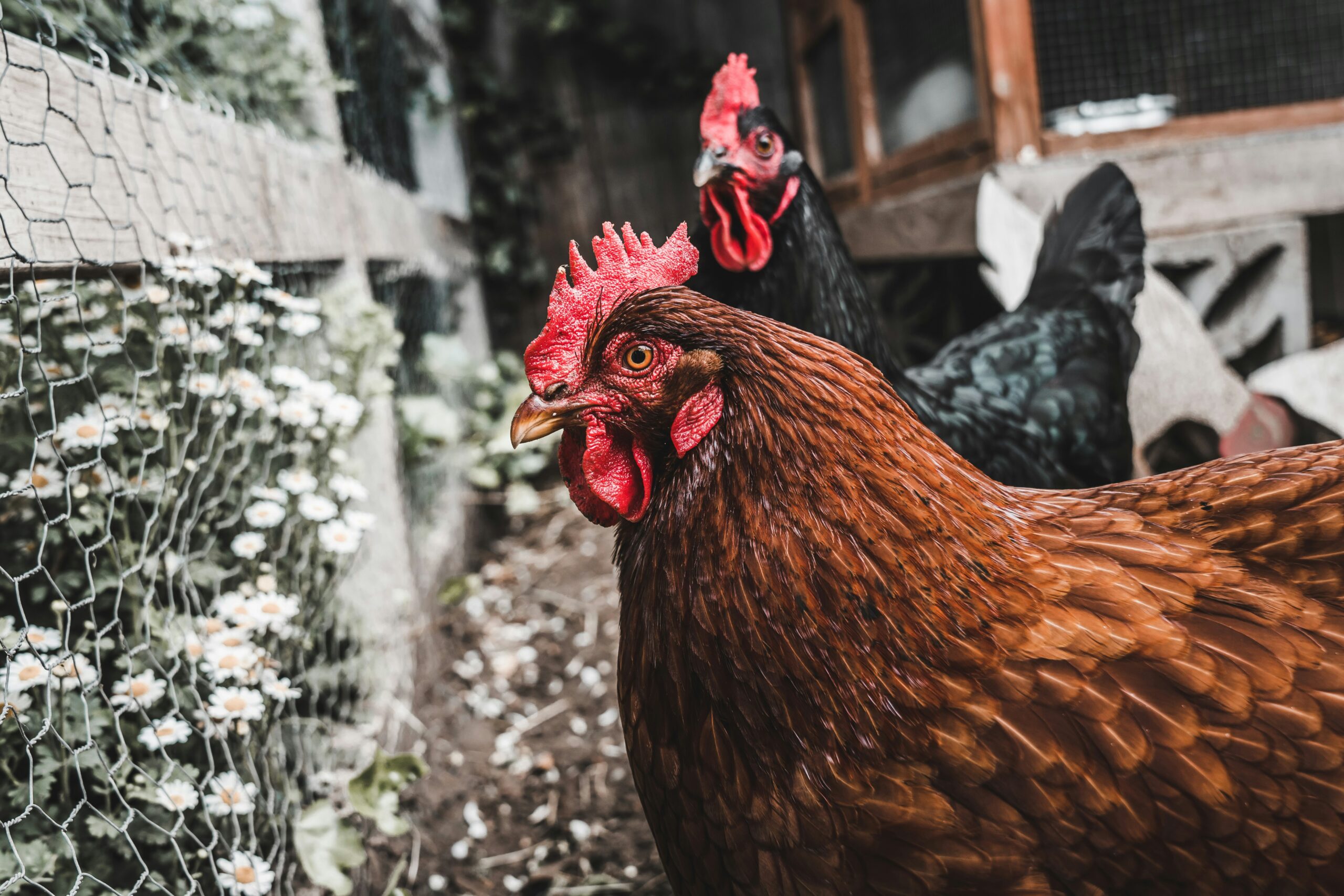Here’s my review of six of the Best Big Chicken Breeds for use in Australian backyards and rural properties
So, you’ve decided to keep chickens at home for pets and egg production or you have a rural property with plenty of land. Maybe you’ve decided to start a work from home lifestyle, and you need that time in the backyard to chill out with nature, enjoying a quiet cuppa coffee or tea, while watching some chickens scratch around in their pen.
You decided on your chicken house or pen after reading my blog post on Getting Started with Chickens, set up your best chicken house and now you want to know which big chicken breed is best?
Big breed chickens are Best for Egg production and are suited to bigger backyards and rural properties. They can be great as pets for children but some of the Larger Breeds like the Rhode Island Red, Australorp or Sussex may be a bit unsuited for small children, though older children won’t have any problems being bullied by a chicken!
Bantam Chicken Breeds, which are smaller in size, and produce smaller eggs may be more suited to young families with small backyard space. You can find my review on The Best Bantam Chicken Breeds to Keep at Home here:
I’ve reviewed 6 of the Best Big Chicken Breeds for Australian Homes and Farms.
- Rhode Island Red
- Australorp
- Sussex
- White Leghorn
- Isa Brown
- Wyandotte
I compared each breed with attributes such as:
- Size
- Egg Production
- Friendliness
- Hardiness
- Life Span
- Cost to purchase
This review is based on my experience with chickens I have kept over the years, plus I trolled the internet for Data and its right here summarized to help you choose. There’s even a quick view chart you can check out and at the end I’ve picked my top 2 Big Chicken Breeds.
These breeds are well-suited to Australian conditions, relatively common so easily purchased and offer a balance of good egg production, hardiness, and friendly disposition, making them ideal for backyards and rural properties alike.
If you are a Chicken breeder, enthusiast or experienced chicken owner and your favourite breed of chicken is not mentioned here, don’t despair. There are many and varied breeds of chickens to choose from and I’ve simply tried to narrow it down, so beginners and inexperienced chicken owners can have a starting point.
I am an amateur or recreational chicken owner having a number of years experience with various breeds of chickens from bantams to large hens. This information may help you get started with choosing a breed of chicken suited to your backyard and lifestyle circumstance. I am not an expert in the field of chickens or chicken keeping so please don’t rely just on the information in this article when choosing chickens to purchase. Please check the accuracy of this information with professionals chicken farming and breeding organizations.
My 6 Best Big Chicken Breeds for use in Australian backyards and rural properties.
1. Rhode Island Red

The Rhode Island Red was developed in the late 19th century in the northeastern United States, specifically Rhode Island and Massachusetts. Farmers crossbred local chickens with breeds like the Red Malay and Brown Leghorn to create a robust bird suitable for both egg-laying and meat production. By the early 20th century, it had gained popularity across farms due to its adaptability and productivity, becoming an officially recognized breed in 1904.
- Description: Dual-purpose breed with rich reddish-brown feathers. Known for resilience and versatility.
- Size: Medium to large (3–4 kg for hens, 4–4.5 kg for roosters).
- Egg Production: 200–280 medium to large brown eggs per year.
- Friendliness: Calm and friendly; good for beginners.
- Hardiness: Hardy and adaptable to various climates, including Australian conditions.
- Expected Life Span: 6–8 years.
- Approximate Cost: $20–$30 per chick; $40–$60 for a point-of-lay hen.
2. Australorp

Hailing from Australia, the Australorp emerged in the early 20th century as a refined version of the English Black Orpington. Australian breeders prioritized egg production, resulting in a chicken capable of laying large numbers of eggs while retaining the Orpington’s friendly demeanour. The breed rose to global prominence after breaking egg-laying records, establishing its reputation as a reliable backyard favourite
- Description: Australian breed, usually black with a greenish sheen; valued for both meat and eggs.
- Size: Medium to large (3–4 kg for hens, 4–5 kg for roosters).
- Egg Production: 250–300 light brown eggs annually.
- Friendliness: Docile and easy-going; great for families with children.
- Hardiness: Extremely hardy; thrives in Australia’s varied climate.
- Expected Life Span: 6–10 years.
- Approximate Cost: $25–$35 per chick; $40–$60 for a point-of-lay hen.
3. Sussex
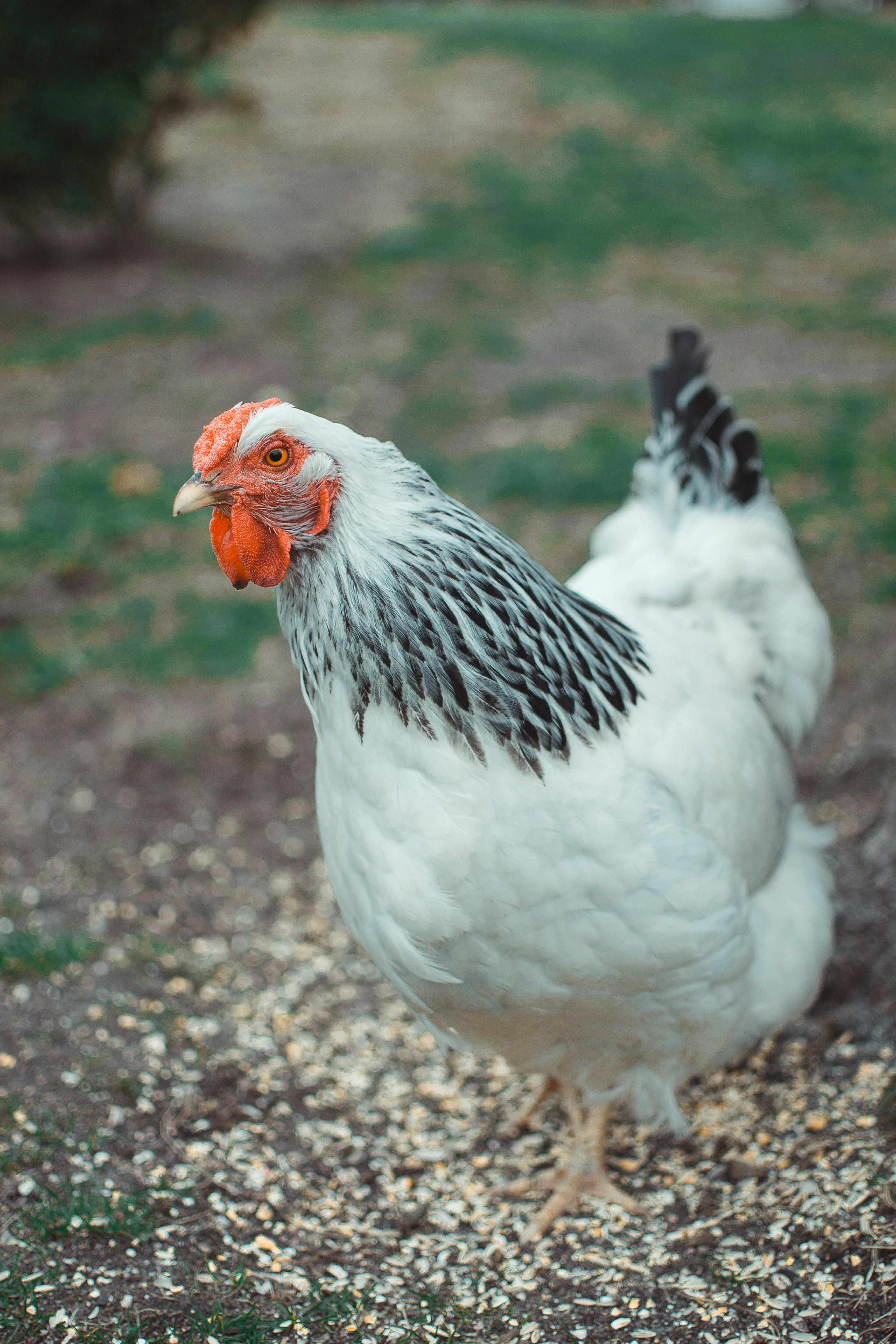
The Sussex breed traces its origins back to ancient England, with evidence of its existence during the Roman occupation over 2,000 years ago. It was initially bred for both meat and eggs, making it a dual-purpose staple on early English farms. Over centuries, selective breeding refined its characteristics, resulting in the calm and productive birds we see today, which remain a favourite among poultry enthusiasts
- Description: Attractive breed with a white body and black markings on neck and tail feathers.
- Size: Large (3–4 kg for hens, 4–5 kg for roosters).
- Egg Production: 240–280 light brown eggs annually.
- Friendliness: Gentle and curious; excellent foragers.
- Hardiness: Adaptable to different climates; good choice for Australian summers and winters.
- Expected Life Span: 6–8 years.
- Approximate Cost: $20–$35 per chick; $40–$60 for a point-of-lay hen.
4. White Leghorn
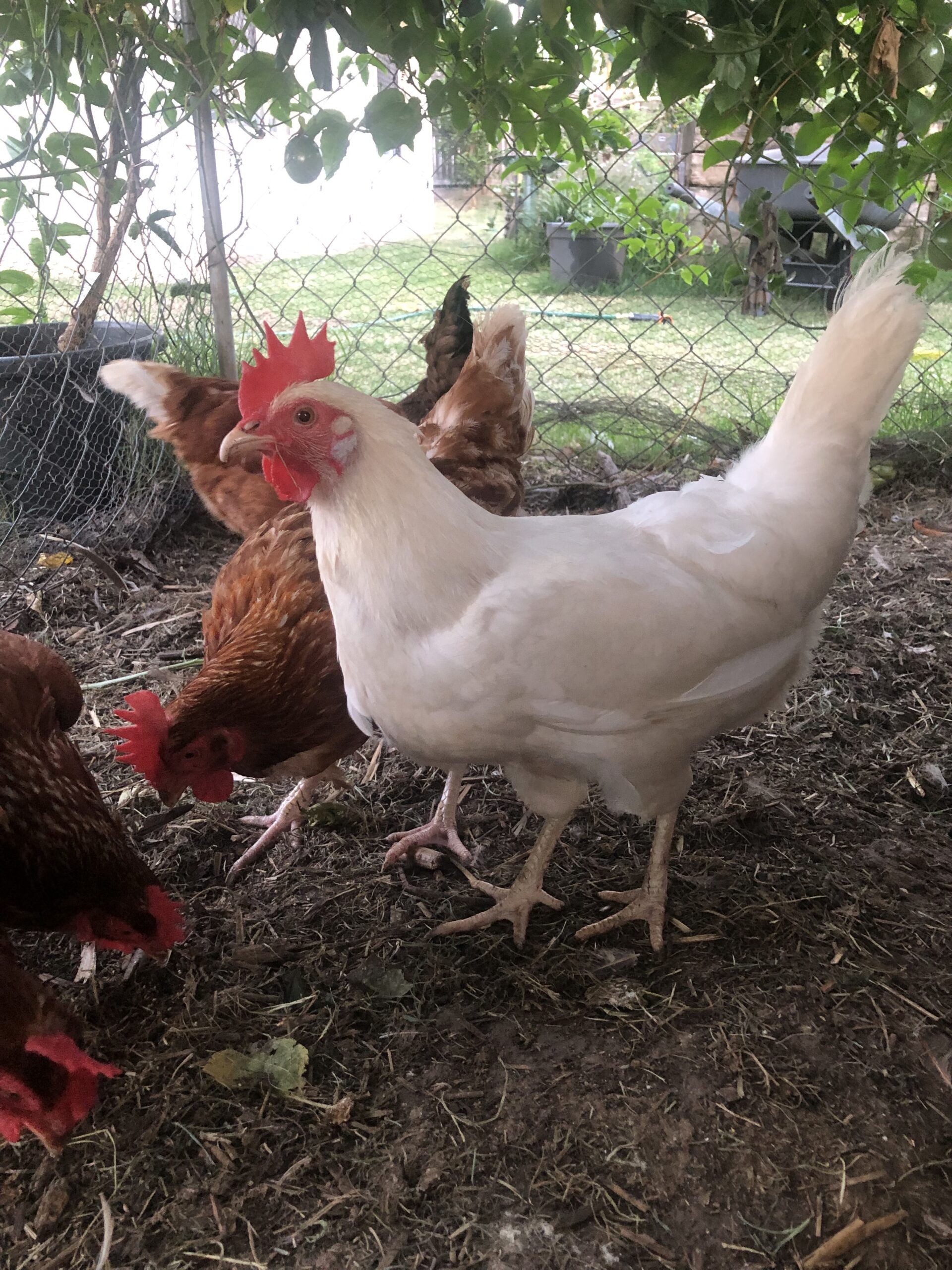
The White Leghorn, originally from the Tuscany region of Italy, derives its name from the port city of Livorno. Exported to other countries in the 19th century, this breed was further developed, particularly in the United States, to optimize egg-laying efficiency. Its elegant appearance and ability to produce large numbers of white eggs made it one of the most commercially successful breeds worldwide.
- Description: Slim, elegant breed with pure white feathers and a distinctive red comb.
- Size: Small to medium (1.8–2.5 kg for hens, 2.5–3 kg for roosters).
- Egg Production: 280–320 white eggs annually; highly efficient layers.
- Friendliness: Active and flighty; better suited to experienced keepers.
- Hardiness: Tolerates heat well; less suited to extreme cold.
- Expected Life Span: 5–7 years.
- Approximate Cost: $15–$25 per chick; $30–$50 for a point-of-lay hen.
5. Isa Brown

The Isa Brown is a modern hybrid chicken, developed in France during the 1970s by the Institut de Sélection Animale (ISA). Engineered specifically for high egg production, it quickly became a favourite among commercial and backyard keepers. While not a pure breed, the Isa Brown’s consistent performance and ease of care have made it a popular choice for egg production globally
- Description: A hybrid layer with tan or reddish-brown feathers and excellent egg-laying capabilities.
- Size: Medium (1.8–2.5 kg for hens).
- Egg Production: 300–350 large brown eggs annually.
- Friendliness: Extremely friendly and sociable; great for beginners.
- Hardiness: Very adaptable but may have shorter lifespans due to high egg production.
- Expected Life Span: 4–5 years.
- Approximate Cost: $15–$20 per chick; $25–$40 for a point-of-lay hen.
6. Wyandotte
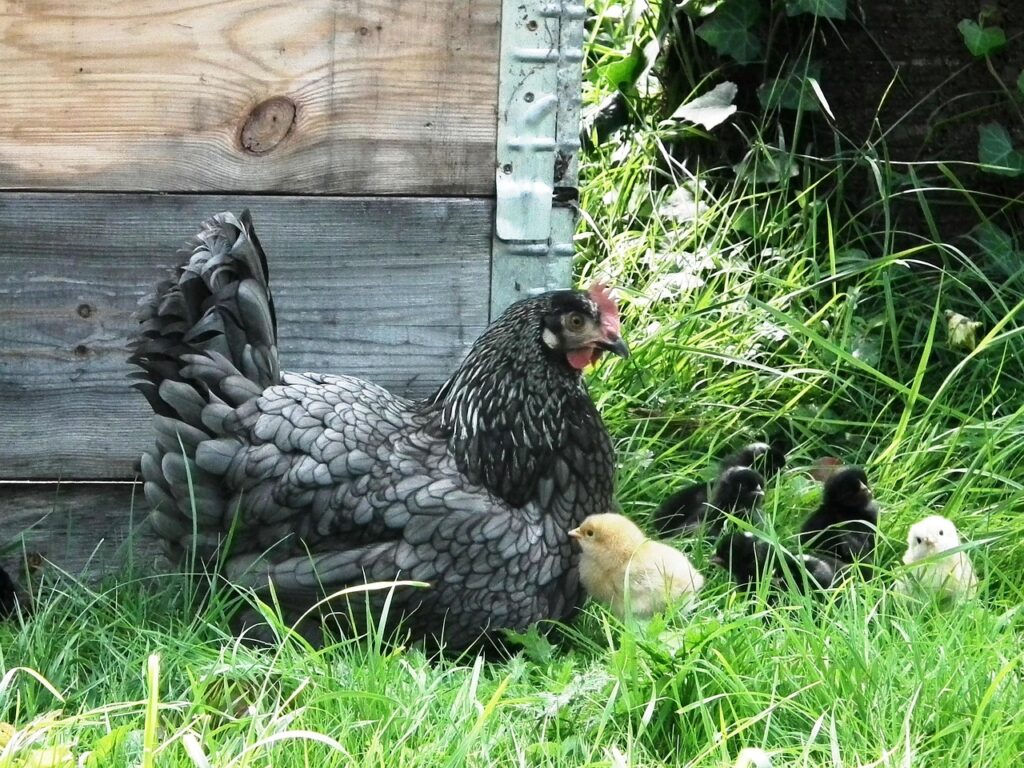
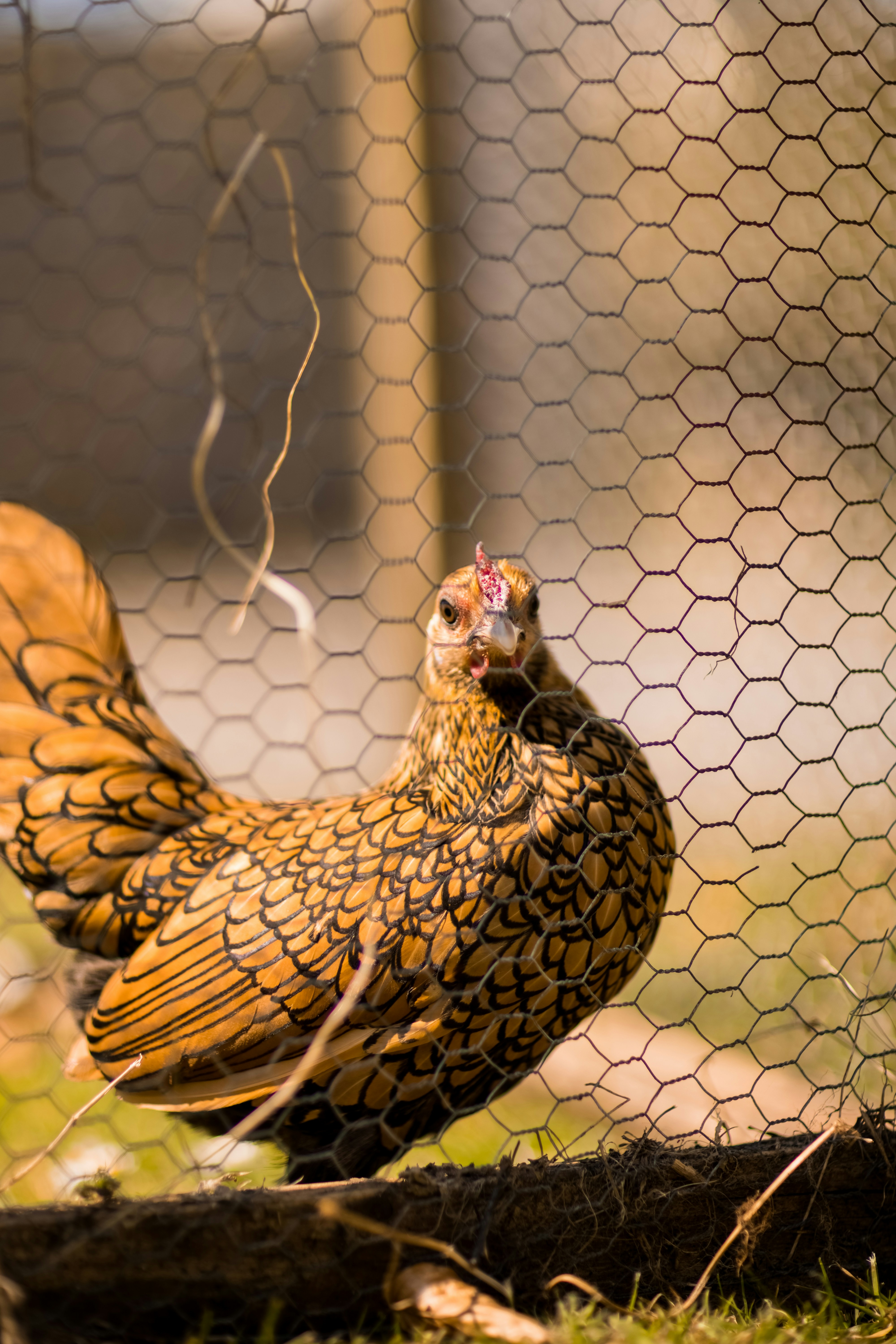
The Wyandotte chicken was developed in the United States in the late 19th century. It was named after the Wyandot people and became known for its striking laced feather patterns and suitability for both meat and egg production. This breed gained recognition for its hardiness and aesthetic appeal, making it a dual-purpose bird valued by farmers and poultry enthusiasts alike.
- Description: Known for their beautiful, laced feather patterns; available in various colors, including gold and silver laced.
- Size: Large (2.7–3.5 kg for hens, 3.5–4.5 kg for roosters).
- Egg Production: 200–240 light brown eggs annually.
- Friendliness: Friendly but can be a bit bossy in mixed flocks.
- Hardiness: Hardy in cold and heat; a good all-rounder for Australia.
- Expected Life Span: 6–9 years.
- Approximate Cost: $25–$35 per chick; $40–$60 for a point-of-lay hen.
Each breed is unique and has been developed, to reflect a blend of practicality and beauty.
Here is a detailed chart comparing the six chicken breeds based on their attributes, followed by an evaluation of the top two breeds overall.
Chicken Breed Comparison Chart
| Breed | Size (Hens) | Egg Production (Annually) | Friendliness | Hardiness | Expected Life Span | Approximate Cost (Point-of-Lay) |
| Rhode Island Red | 3–4 kg | 200–280 eggs | Calm and friendly | Very hardy | 6–8 years | $40–$60 |
| Australorp | 3–4 kg | 250–300 eggs | Docile and family-friendly | Extremely hardy | 6–10 years | $40–$60 |
| Sussex | 3–4 kg | 240–280 eggs | Gentle and curious | Adaptable | 6–8 years | $40–$60 |
| White Leghorn | 1.8–2.5 kg | 280–320 eggs | Active but flighty | Good in heat, less cold-tolerant | 5–7 years | $30–$50 |
| Isa Brown | 1.8–2.5 kg | 300–350 eggs | Extremely friendly | Adaptable | 4–5 years | $25–$40 |
| Wyandotte | 2.7–3.5 kg | 200–240 eggs | Friendly but bossy | Hardy in varied climates | 6–9 years | $40–$60 |
Highlights
- Largest Size: Rhode Island Red, Australorp, Sussex (3–4 kg for hens).
- Most Egg Production: Isa Brown (300–350 eggs per year).
- Most Friendly: Isa Brown (extremely friendly).
- Most Hardy: Australorp (extremely hardy).
- Highest Expected Life Span: Australorp (6–10 years).
- Best Approximate Cost for Laying Hens: Isa Brown ($25–$40 per point-of-lay hen).
Overall Best Two Chicken Breeds
Australorp
The Australorp stands out as an all-rounder due to its excellent egg production (250–300 eggs annually), docile nature, extreme hardiness, and long lifespan of up to 10 years. It is ideal for Australian backyards, tolerating various climates and requiring minimal care.

Isa Brown
Isa Browns are exceptional layers, producing 300–350 eggs per year, and are the most beginner-friendly breed due to their sociable and gentle temperament. Their low cost and adaptability make them a practical choice for families and small-scale egg production.

Summary of the Best Two chicken breeds ***
Australorp is the best choice for those seeking a dual-purpose bird with longevity and resilience
Isa Brown is perfect for high egg production and affordability, making them the top two breeds for Australian backyard poultry keeping.
Buying Chickens.
You can buy chickens at local country Flea markets or backyard growers and the price is usually cheaper. That being said the chicken’s heritage can be uncertain with many having mixed breeding history and they may not have the attributes you were looking for. I have bought many chickens from Flea markets over the years and generally have had no issues. If this is your choice, try to assess the hen for signs of disease or illness before you purchase and ask the seller about the chickens’ history.
Rural pet and produce merchants and established Chicken hatcheries offer better security of the chicken’s heritage and more likely an assurance of a healthy bird. Most will have ample supplies of both Australorps and Isa brown chickens. Hatcheries will have several other varieties for you to check out if you prefer.
You can even purchase chickens online now and have them delivered to your home.

